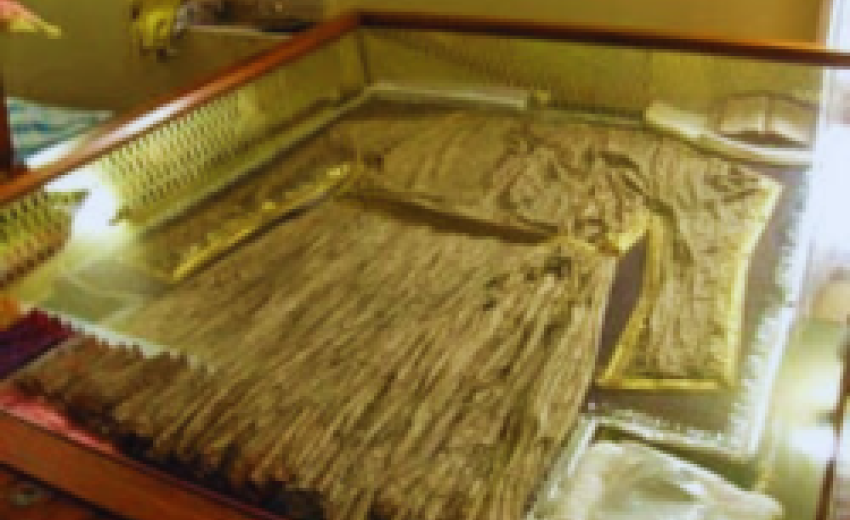During a dark period in Sikh history, Mughal Emperor Jahangir had imprisoned Guru Hargobind, the sixth Sikh Guru, along with 52 Hindu kings in the Gwalior Fort.
Chola Sahib, the 400-Year-Old Sacred Robe Worn by the Sixth Sikh Guru,Guru Hargobind on the First Bandi Chhor Diwas in October 1619, Restored Close to Diwali 2015
The story of this robe goes back to October 1619
During a dark period in Sikh history, Mughal Emperor Jahangir had imprisoned Guru Hargobind, the sixth Sikh Guru, along with 52 Hindu kings in the Gwalior Fort. For several months, these leaders were held captive, their freedom taken away. Then came a day that would be celebrated for centuries to come. Emperor Jahangir, for reasons debated by historians, decided to release Guru Hargobind. The Guru, in an act of great compassion and leadership, refused to leave unless the 52 Hindu kings were also freed.
Guru Hargobind wore Chola Sahib when he was freed from Gwalior Fort and returned to Amritsar. But he didn't leave alone. He also helped 52 Hindu kings escape with him. This happened on Diwali, and Sikhs have celebrated this day ever since. They call it Bandi Chhor Diwas, which means "day of liberation."
The Chola Sahib is a long cloak with 52 tails, one for each king the Guru saved. For many years, it was kept safe in a place called Ghudani Kalan in Ludhiana. In 2015, a team led by Namita Jaspal worked hard to restore this precious relic.
“This fabric of faith dates back to the early 17th century and the villagers are attached to it emotionally. It is a gift from the Guru for their hospitality once. It was a tradition with the Sikh Gurus to leave their belongings to their hosts, and the cloak is a symbol of that,” said Namita, professional conservator since 1995.
Restoring Chola Sahib
About the Shiromani Gurdwara Parbandhak Committee (SGPC) view on the authenticity of the robe as Guru’s relic, she said: “I’m sure they know, since they once took it, but the villagers fought for it and got it back. Since then, they want to keep the SGPC away from it.”
In 2011, the residents of the village reached out to Namita due to concerns about the deteriorating condition of the fabric, which had become weakened and less flexible with age. They invited her to visit the village to assist in preserving the item. BS Dhillon, who leads the department of Guru Granth Sahib studies at Guru Nanak Dev University in Amritsar, noted that while historians cannot confirm its authenticity with certainty, the combination of historical references and strong local beliefs suggests it could indeed be the original chola.
Also, Sikh historian Simarjeet Singh pointed out that historical accounts describe the chola worn by the sixth Guru upon his release from Mughal imprisonment as having 52 corners, a feature shared by the garment displayed in the village. Singh added that individuals who place trust in historical accounts tend to acknowledge this item as a genuine relic of the Guru.
Working on historical artefacts with religious significance often presents unique challenges beyond those typically encountered in conservation. The conservator, Namita, recognized the importance of maintaining the community's faith throughout the restoration process. Her experience included guiding the restoration of wall paintings at Harmandir Sahib in Amritsar.
The robe had suffered extensive damage due to fungal growth and fabric loss, caused by both the natural ageing process and acts of vandalism. Previous attempts to mitigate the damage had involved sewing torn areas at various points in time. Given the sacred nature of the Chola Sahib, Namita was required to wear gloves while handling the revered garment.
“I told the villagers I couldn’t do my work without touching it. Even then, the frowning sewadars would watch over me. Within a month, I restored their faith,” she said.
*Based on an article by Usmeet Kaur, published in sikhnugget.com on 10th November 2015

